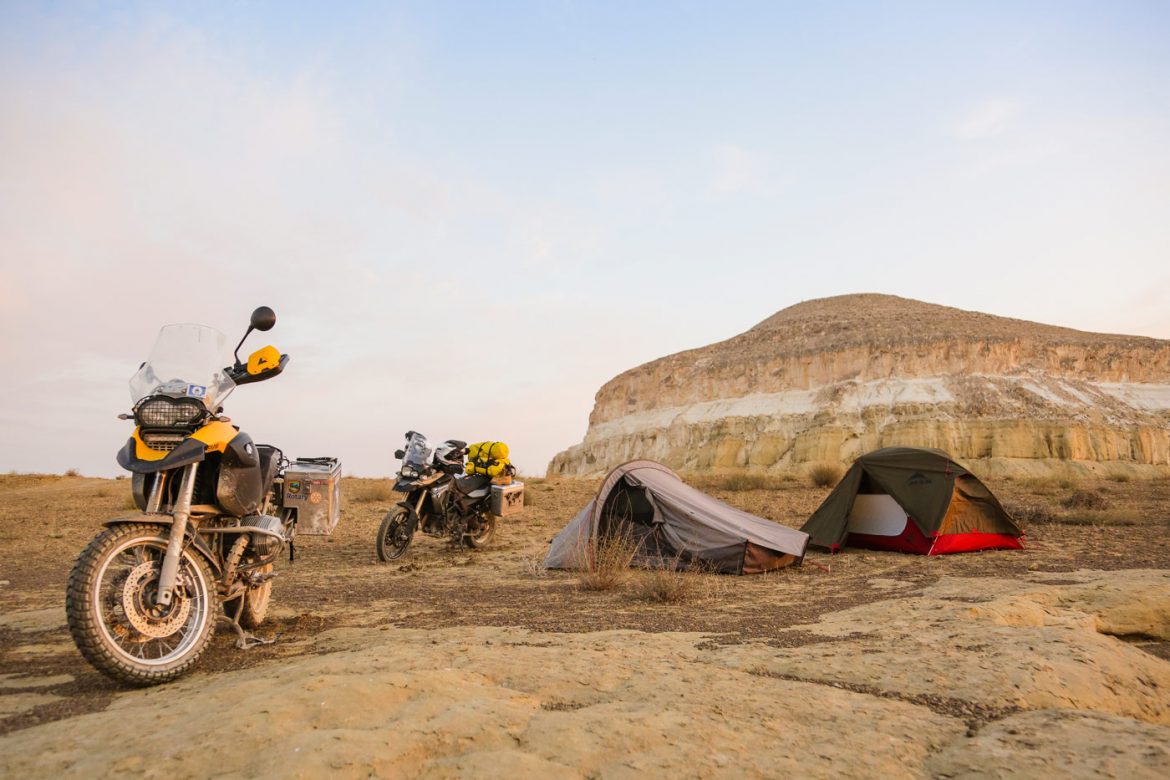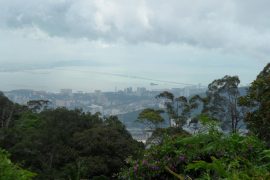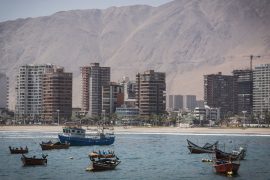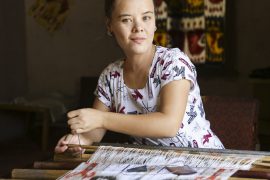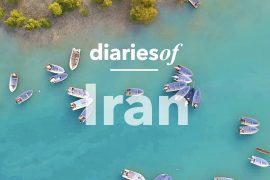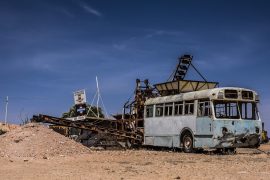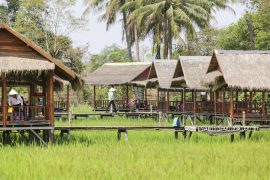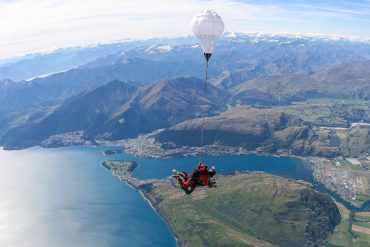After taking the ferry from Baku (Azerbaijan) through the Caspian Sea, we made it to the quiet port town of Aktau in Kazakhstan. (For more details about the Ferry crossing from Baku to Aktau, read our article). Even though there are a couple of beaches on this side of the Caspian Sea, we were not terribly attracted by any of them, and the added desolation of the town, we decided to proceed the trip the following day.
We drove through the Mangystau province for about 500 kilometres, from Aktau until Beyneu, at the border with Uzbekistan. We drove through this arid and desolate area, until we reached the tiny selo (a Slavic term for a type of small village) of Shetpe, from where we decided to make a few detours.
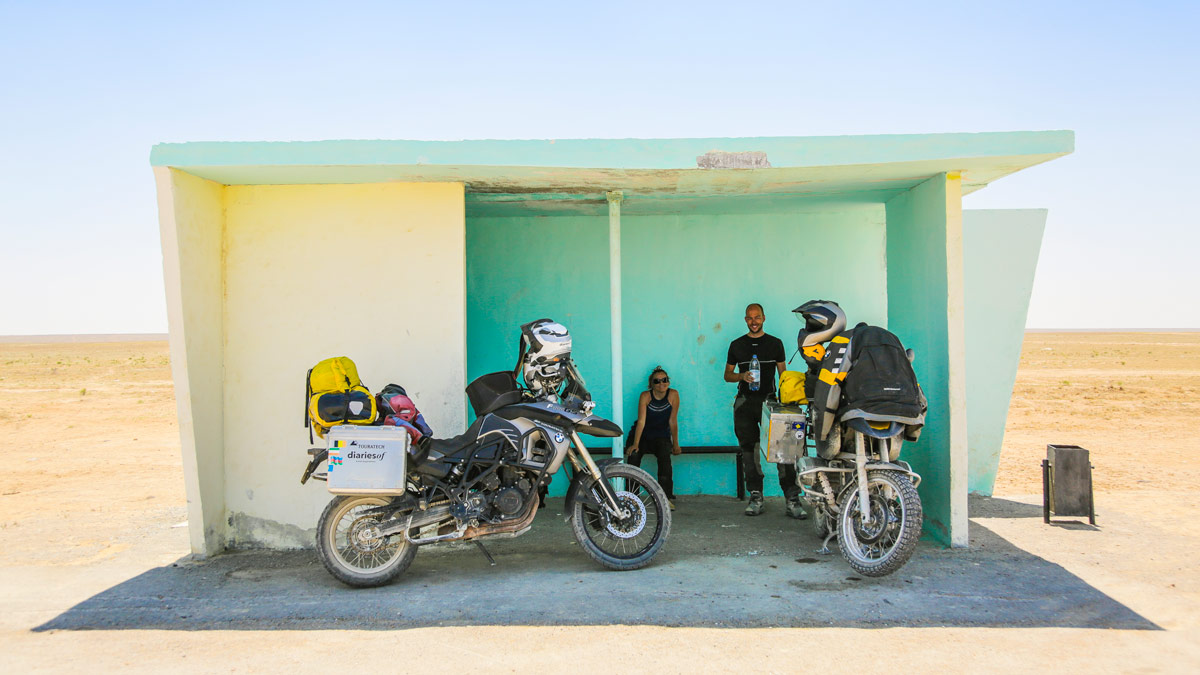
Our first detour took us through some dirt and sandy trails to the unusually shaped Mount Sherkala. Historians say that the remains at the top of the mountain belong to what was once a fortified city, which served as watchtower and caravanserai along the legendary Silk Road. Today, very little remains of the fort that once belonged to Genghis Khan’s eldest son, but the mountain is still quite peculiar and almost mystical. It is often described as having the shape of a yurt, with its steep walls, that offer spectacular sunset views.
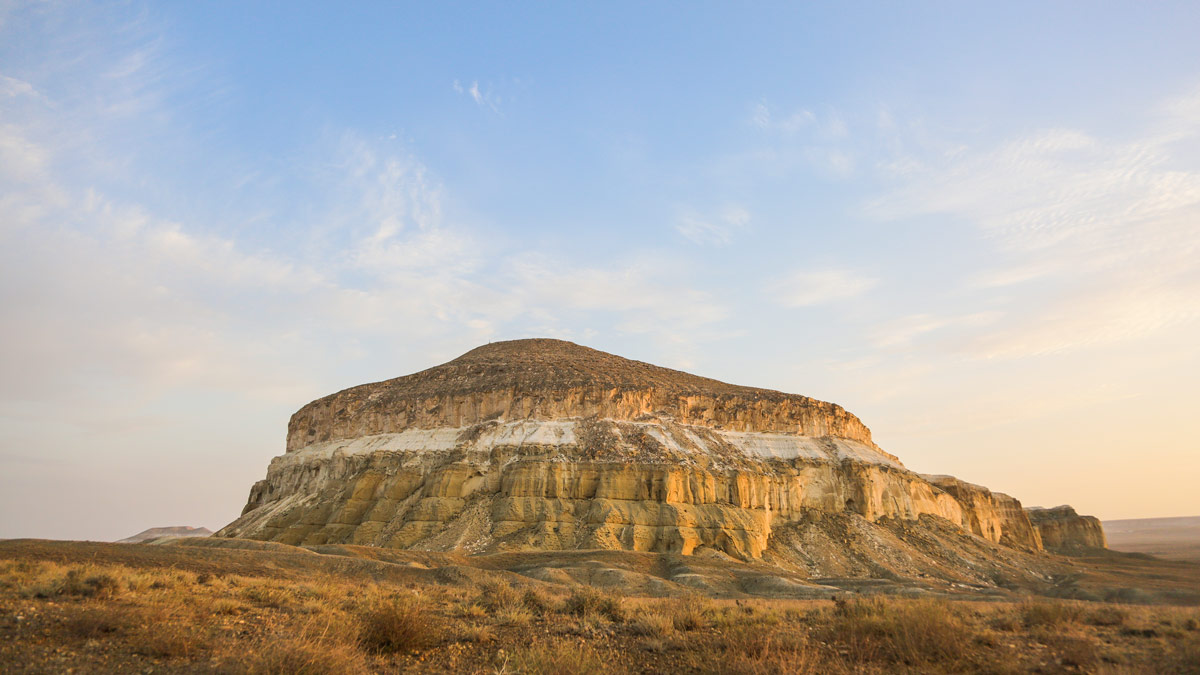
The Lion’s Castle – that’s how Sherkala translates – was so extraordinary that we decided to set up camp there for the night. We were with Maarten, a Dutch motorcycle traveller we had met at Baku port and with whom we had crossed the border into Kazakhstan, and who had gone through the entire border ordeal with us. While we were levelling the ground to pitch our tent, we noticed what looked like a seashell. We later found out that we were standing in what used to be the bottom of the Tethys Ocean, one billion years ago! That explained why the landscape around us looked so strange and was so remote from the closest settlement.
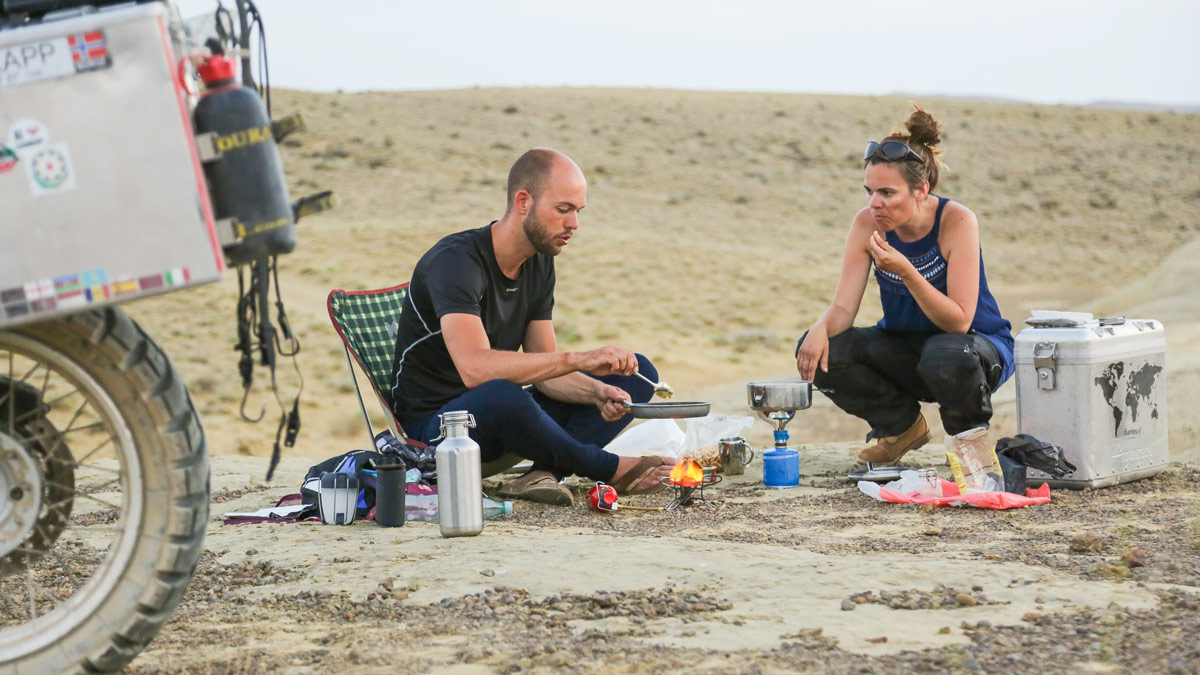
While we were preparing a simple dinner on our gas stoves, we couldn’t help feeling as if we were in a different world, inhabited by only three humans. Until this day this campsite is still in our top ten places where we spent the night. It was also from here that we enjoyed one of the most beautiful sunsets ever.
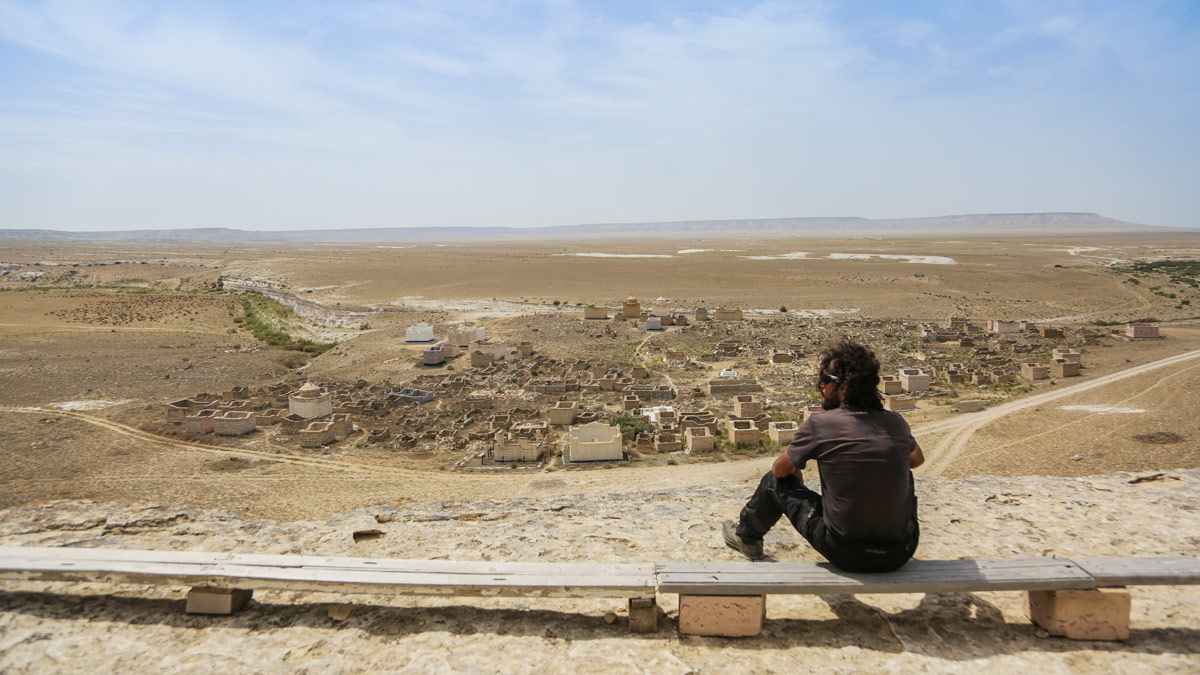
The next day, it was early morning when we returned to the main road, to take another detour before leaving the Mangystau region. We were up to discover the Shakpak Ata Cave Mosque, a spectacular site in the middle of the desert. We got so overwhelmed by the views, by the trails that took us further in into desert, and by this almost forgotten cave mosque, that hides so much history in its walls, that we forgot about a basic need: so, we ran out of petrol!
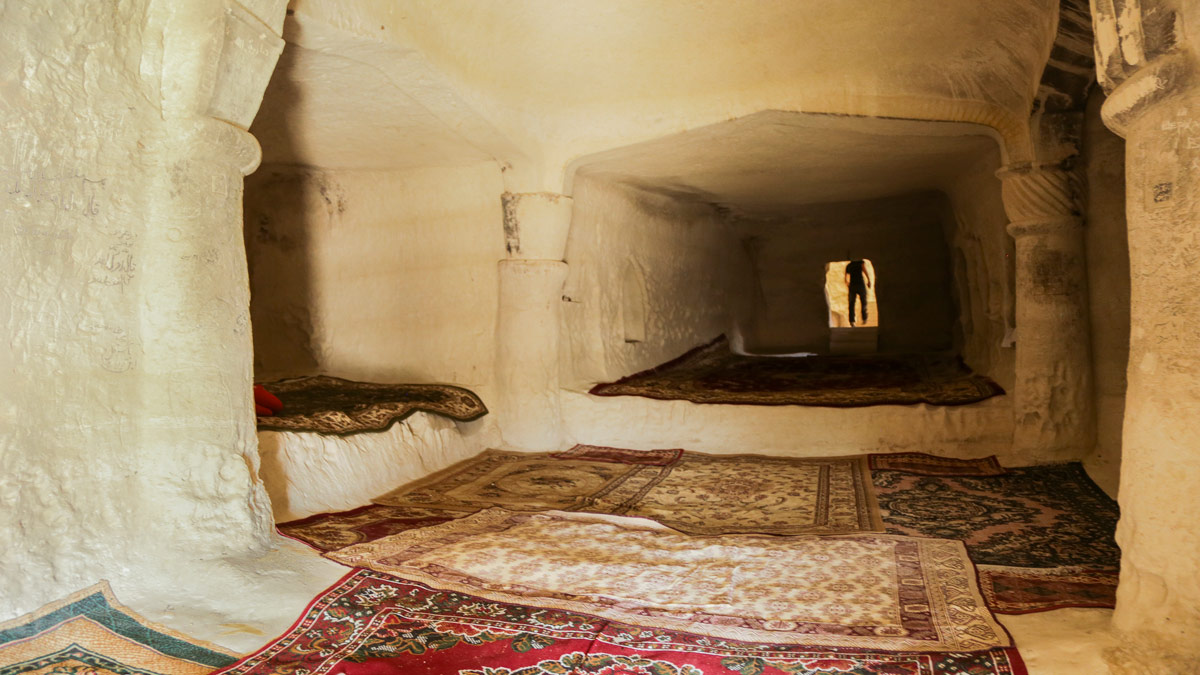
The reason this happened – besides our excessive over-confidence – was because we had come across one or two petrol stations, but none selling petrol. In this region, gas is more popular than petrol, and we had to start being careful about that. Luckily, we were only 20 kilometres away from the next village, and Marteen offered to go and get us some petrol. We stayed behind, in a place without any shade…
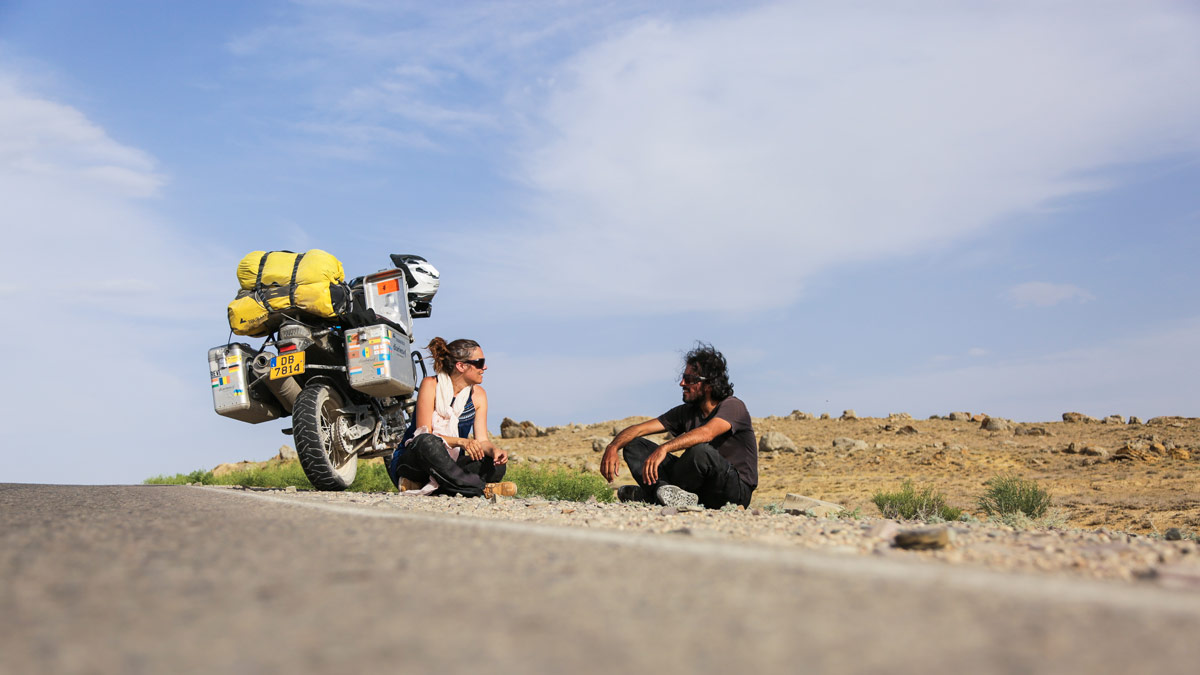
A few days later, we said goodbye to our friend and travel companion, as we were about to leave Kazakhstan to enter Uzbekistan, while he continued his journey through Kazakhstan. A happy coincidence would mean that we would meet again much later. For us it would be a couple of months, until we re-entered Kazakhstan, from the south after quitting Kyrgyzstan.


